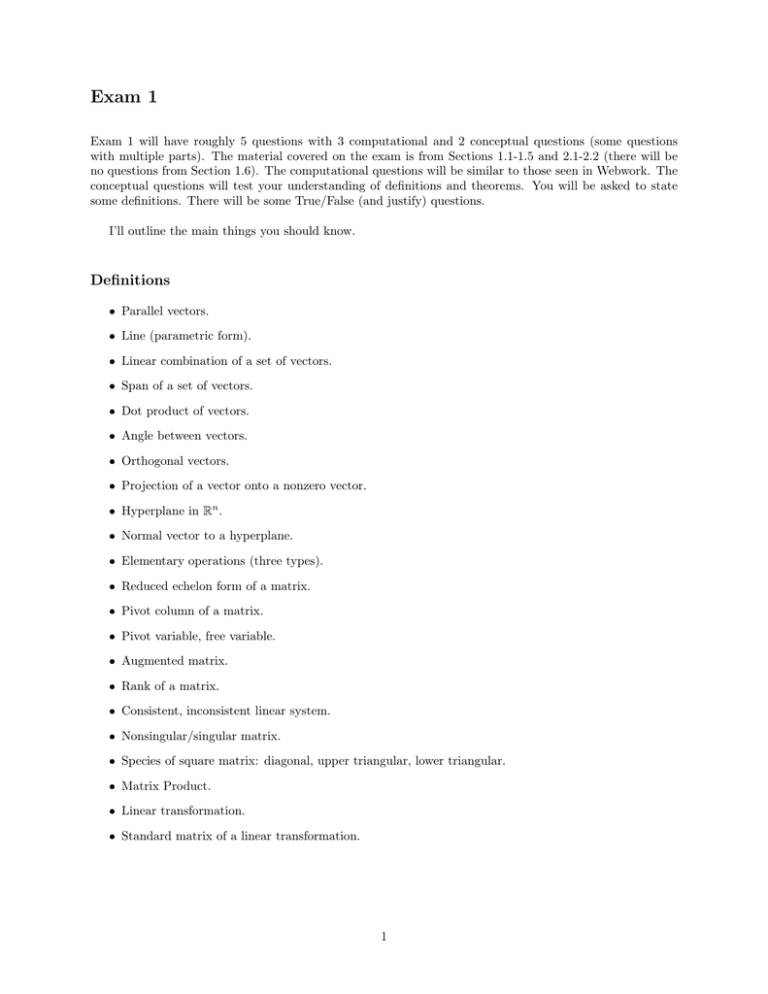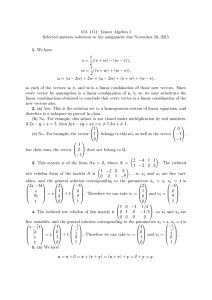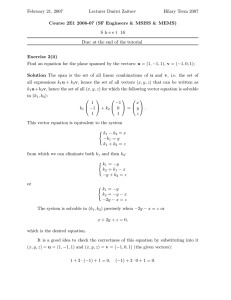Exam 1
advertisement

Exam 1 Exam 1 will have roughly 5 questions with 3 computational and 2 conceptual questions (some questions with multiple parts). The material covered on the exam is from Sections 1.1-1.5 and 2.1-2.2 (there will be no questions from Section 1.6). The computational questions will be similar to those seen in Webwork. The conceptual questions will test your understanding of definitions and theorems. You will be asked to state some definitions. There will be some True/False (and justify) questions. I’ll outline the main things you should know. Definitions • Parallel vectors. • Line (parametric form). • Linear combination of a set of vectors. • Span of a set of vectors. • Dot product of vectors. • Angle between vectors. • Orthogonal vectors. • Projection of a vector onto a nonzero vector. • Hyperplane in Rn . • Normal vector to a hyperplane. • Elementary operations (three types). • Reduced echelon form of a matrix. • Pivot column of a matrix. • Pivot variable, free variable. • Augmented matrix. • Rank of a matrix. • Consistent, inconsistent linear system. • Nonsingular/singular matrix. • Species of square matrix: diagonal, upper triangular, lower triangular. • Matrix Product. • Linear transformation. • Standard matrix of a linear transformation. 1 Theorems/concepts • Cauchy-Schwarz inequality. • Triangle inequality. • Elementary operations do not change the solution set of a linear system. • All echelon forms of a matrix have the same number of nonzero rows, and have their pivots in the same locations. • Every matrix has a unique reduced echelon form. • If the system Ax = b is consistent and u is a particular solution, then every solution is of the form u + v for some solution v of the associated homogeneous system. • A linear system Ax = b is consistent for every b if and only rank A is equal to the number of rows of A. • A consistent linear system Ax = b has a unique solution if and only if rank A is equal to the number of columns of A. Computations • Compute the projection of a vector in Rn onto a nonzero vector. • Hyperplanes: convert between the implicit equation a · x = c and the parametric form. • Given a hyperplane, find the point on it closest to the origin. • Compute the reduced echelon form of a matrix. • Given m linear equations in n variables, find the solution set of the system. • Given vectors v1 , . . . , vk , b ∈ Rn , find scalars c1 , . . . , ck so that b = c1 v1 + · · · + ck vk . • Find the standard matrix of a linear transformation. 2



